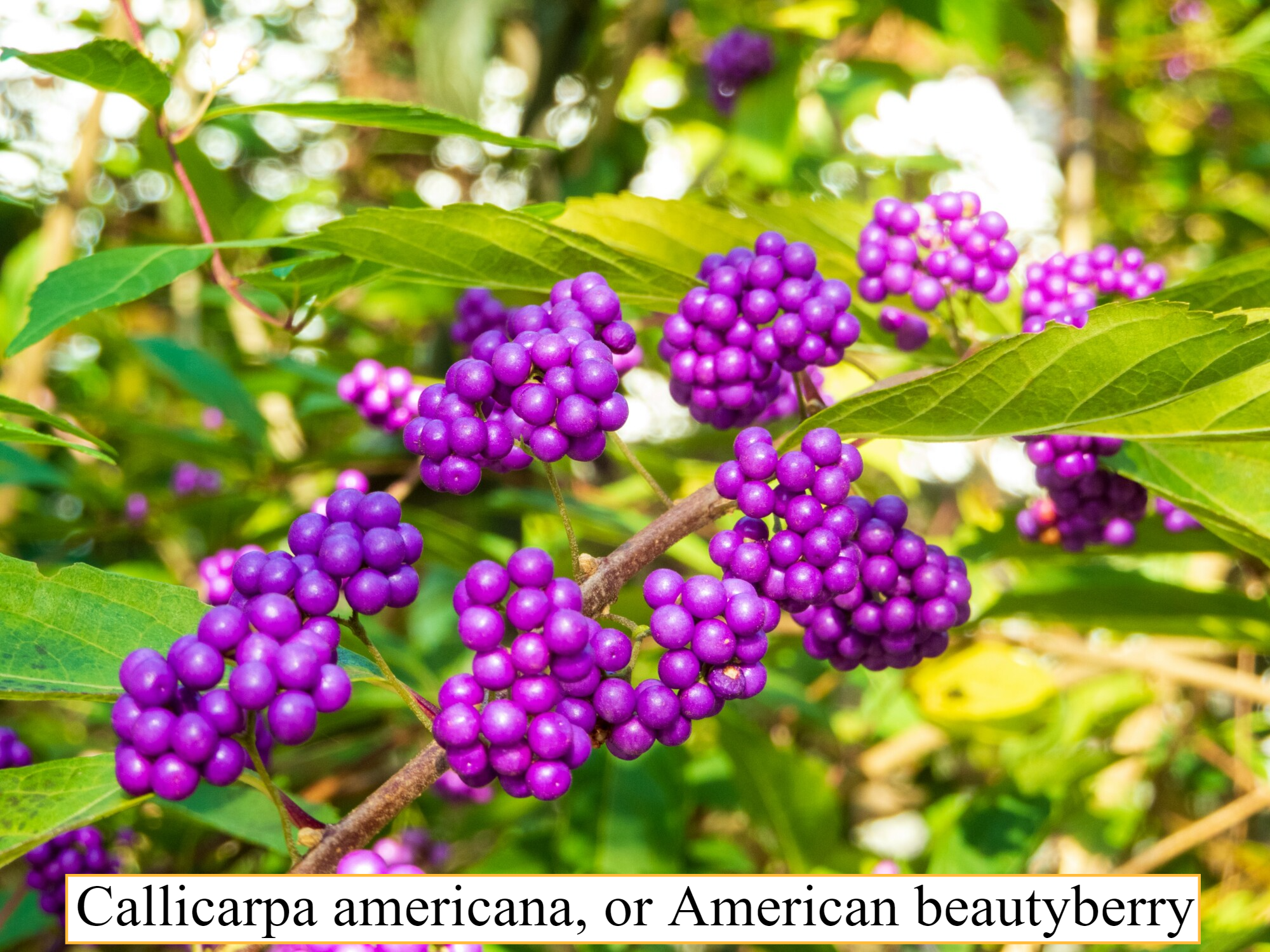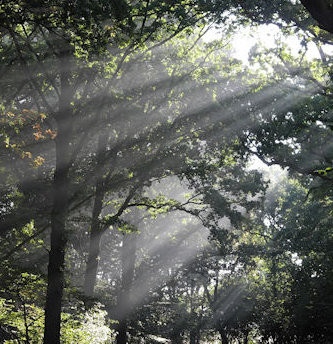Written by Don Richardson


Plant Type | Perennial |
Size | 4-8’ tall, 6-12’ wide |
Sun Exposure | Full sun to partial shade |
Soil Type | Chalk, Clay, Loam, Sand |
Soil pH | 6.0-7.5 |
Bloom Time | Spring to Fall |
Hardiness Zones | 6-11 (USDA) |
Native | Is a Florida Native |
Need Pollinator | No |
Edible Plant | Yes |
Medicinal Plant | Yes |
Any reference to medicinal or culinary use of plants or plant parts should in no way be considered an endorsement by The Ocala Food Forest or its staff. Research is crucial in safe and proper consumption or experimentational use of any plant.
Appearance and Growth Habits of the Beautyberry plant
The Callicarpa americana is an upright shrub that grows to about 3 feet in height. Its dark green leaves are oval shaped and have serrated edges. In the fall, its foliage turns yellow before dropping off. From late summer through fall, it produces small purple flowers that give way to clusters of striking magenta berries. These berries remain on the plant even after the leaves fall off in winter, adding a warm hue to what would otherwise be a dull landscape.
This plant prefers moist soil and partial sun or shade; however, it can tolerate full sun if given adequate water during hot summer days. It does best when planted in USDA Hardiness Zones 7-9 but can survive colder climates if given sufficient mulch for insulation during winter months. Additionally, this shrub requires little maintenance other than occasional pruning to keep its shape tidy and remove any dead branches or stems as needed.
Benefits of Growing the Beautyberry plant
The beautiful berries of this plant are not only visually pleasing—they also attract many beneficial birds and insects such as bees, butterflies, hummingbirds, finches, bluebirds, mockingbirds and cardinals who will add life to your garden while providing natural pest control. The fact that its fruit remains on the bush even after the leaves drop means that these creatures will continue to find food even when other plants in your garden have gone dormant for the season. Additionally, because of its hardy nature and low maintenance requirements, this plant makes an excellent addition to any landscape design without requiring too much effort on your part!
Conclusion: The American beautyberry is an attractive shrub with a wide range of benefits for gardens both big and small! With its bright purple berries set against deep green foliage in summertime turning into vibrant yellow hues in autumn before finally transforming into stunning magenta clusters throughout winter months—it’s easy to see why so many people choose this lovely shrub as their go-to choice for landscaping projects! Not only does it provide visual interest all year round but it also attracts beneficial birds & insects which helps promote growth & health within your garden ecosystem! So why not try adding some American beautyberry plants into your own backyard? You won't regret it!










0 Comments